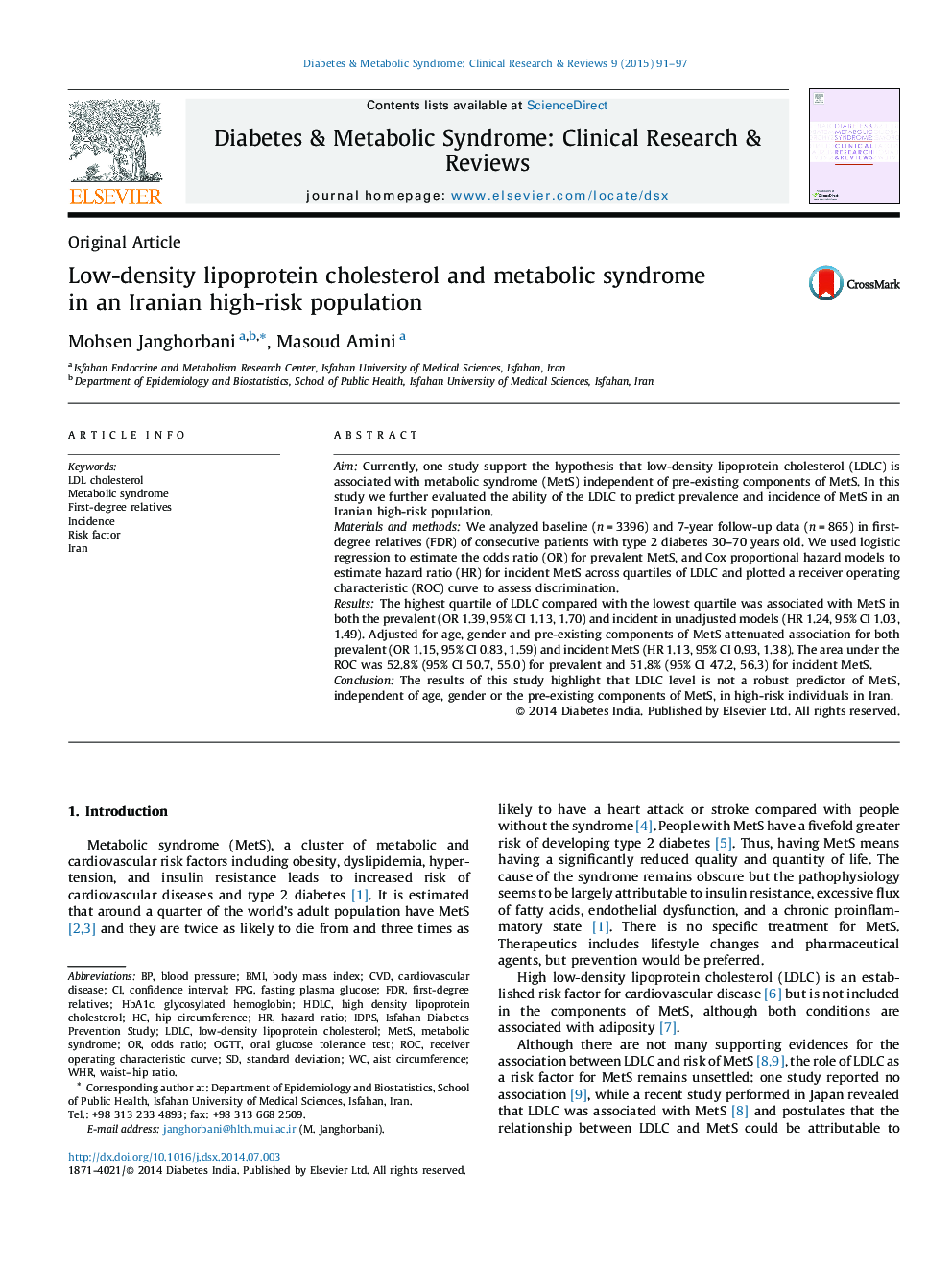| Article ID | Journal | Published Year | Pages | File Type |
|---|---|---|---|---|
| 2910034 | Diabetes & Metabolic Syndrome: Clinical Research & Reviews | 2015 | 7 Pages |
AimCurrently, one study support the hypothesis that low-density lipoprotein cholesterol (LDLC) is associated with metabolic syndrome (MetS) independent of pre-existing components of MetS. In this study we further evaluated the ability of the LDLC to predict prevalence and incidence of MetS in an Iranian high-risk population.Materials and methodsWe analyzed baseline (n = 3396) and 7-year follow-up data (n = 865) in first-degree relatives (FDR) of consecutive patients with type 2 diabetes 30–70 years old. We used logistic regression to estimate the odds ratio (OR) for prevalent MetS, and Cox proportional hazard models to estimate hazard ratio (HR) for incident MetS across quartiles of LDLC and plotted a receiver operating characteristic (ROC) curve to assess discrimination.ResultsThe highest quartile of LDLC compared with the lowest quartile was associated with MetS in both the prevalent (OR 1.39, 95% CI 1.13, 1.70) and incident in unadjusted models (HR 1.24, 95% CI 1.03, 1.49). Adjusted for age, gender and pre-existing components of MetS attenuated association for both prevalent (OR 1.15, 95% CI 0.83, 1.59) and incident MetS (HR 1.13, 95% CI 0.93, 1.38). The area under the ROC was 52.8% (95% CI 50.7, 55.0) for prevalent and 51.8% (95% CI 47.2, 56.3) for incident MetS.ConclusionThe results of this study highlight that LDLC level is not a robust predictor of MetS, independent of age, gender or the pre-existing components of MetS, in high-risk individuals in Iran.
